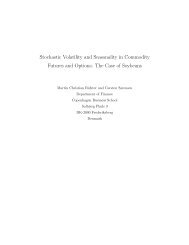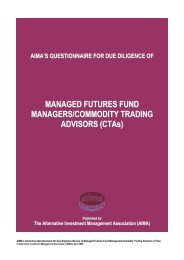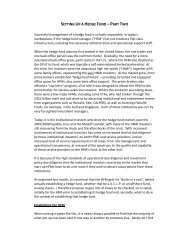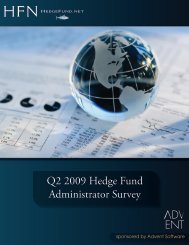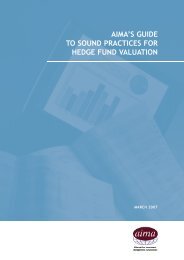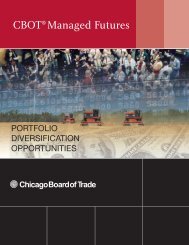Lintner Revisited: A Quantitative Analysis of Managed ... - CME Group
Lintner Revisited: A Quantitative Analysis of Managed ... - CME Group
Lintner Revisited: A Quantitative Analysis of Managed ... - CME Group
Create successful ePaper yourself
Turn your PDF publications into a flip-book with our unique Google optimized e-Paper software.
cmegroup.com<br />
INTRODUCTION<br />
<strong>Managed</strong> futures comprise a diverse collection <strong>of</strong> active hedge<br />
fund trading strategies which specialize in liquid, transparent,<br />
exchange-traded futures markets and deep foreign exchange<br />
markets. Some <strong>of</strong> the approaches taken by managed futures<br />
managers exploit the sustained capital flows across asset classes<br />
that typically take place as markets move back into equilibrium<br />
after prolonged imbalances. Others thrive on the volatility and<br />
choppy price action which tend to accompany these flows. Others<br />
do not exhibit sensitivity to highly volatile market environments<br />
and appear to generate returns independent <strong>of</strong> the prevailing<br />
economic or volatility regime. This explains in part why managed<br />
futures <strong>of</strong>ten outperform traditional long-only investments and<br />
most alternative investment and hedge fund strategies during<br />
market dislocations and macro events.<br />
This paper endeavors to re-introduce managed futures as a liquid,<br />
transparent hedge fund sub-style which actively trades a diversified<br />
mix <strong>of</strong> global futures markets and attempts to dispel some <strong>of</strong> the<br />
more common misconceptions many institutional investors hold<br />
regarding the space. We discuss the likely effects and implications<br />
<strong>of</strong> the proliferation <strong>of</strong> futures markets and managed futures assets<br />
under management on the performance and capacity <strong>of</strong> trading<br />
managers. We also address trading manager selection and style,<br />
and differentiate among the myriad unique trading strategies<br />
which currently encompass managed futures. An assessment<br />
<strong>of</strong> the performance and risk characteristics <strong>of</strong> managed futures<br />
relative to traditional investments and other alternatives is<br />
conducted, including a critique <strong>of</strong> the mean-variance framework<br />
in which many practitioners and investment pr<strong>of</strong>essionals analyze<br />
performance and risk. The Omega performance measure is <strong>of</strong>fered<br />
as an alternative to traditional mean-variance ratios since it<br />
accounts for the non-Gaussian nature <strong>of</strong> the distributions typically<br />
encountered in finance; the Omega function was invented by<br />
mathematicians in 2002, and thus was not available to <strong>Lintner</strong>.<br />
This paper also gives a brief treatment <strong>of</strong> risk management and<br />
the importance <strong>of</strong> liquidity. From there, we analyze historical<br />
correlations among managed futures, traditional investments,<br />
and other alternative investment strategies, demonstrating the<br />
diversification benefits that may be reaped from the introduction<br />
<strong>of</strong> managed futures’ uncorrelated variance into traditional<br />
portfolios and blended portfolios <strong>of</strong> traditional and alternative<br />
investments. We explore the proclivity <strong>of</strong> managed futures<br />
strategies toward strong performance during market dislocations<br />
due to their tendency to exploit the massive flows <strong>of</strong> capital to or<br />
from quality that tend to coincide with these events. Although<br />
managed futures have <strong>of</strong>ten produced outstanding returns during<br />
dislocation and crisis events, it must be emphasized that managed<br />
futures are not and should not be viewed as a portfolio hedge, but<br />
rather as a source <strong>of</strong> liquid transparent return that is typically not<br />
correlated to traditional or other alternative investments.<br />
Finally, we conclude with a discussion <strong>of</strong> some <strong>of</strong> the unique<br />
benefits <strong>of</strong>fered to pension plan sponsors, endowments and<br />
foundations, namely, the ability to use notional funding to<br />
efficiently fund exposure to managed futures, diminish the risks<br />
associated with asset-liability mismatches, and capitalize on<br />
favorable tax treatment. We also close the loop in relation to how<br />
<strong>Lintner</strong>’s insights on the role <strong>of</strong> managed futures in an institutional<br />
portfolio have held up after nearly 30 years.<br />
2<br />
Past performance is not necessarily indicative <strong>of</strong> future results.


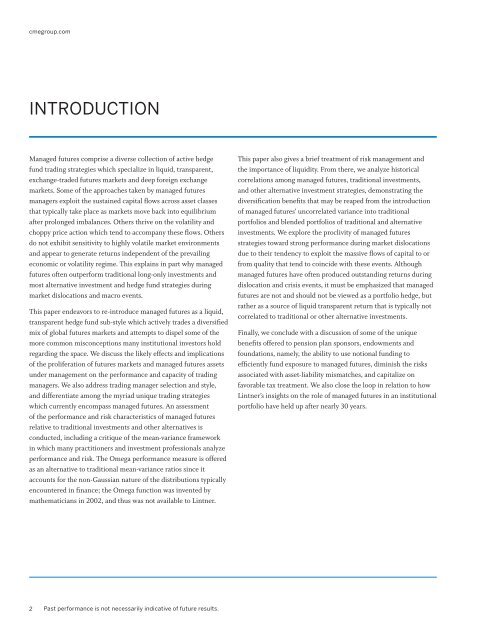

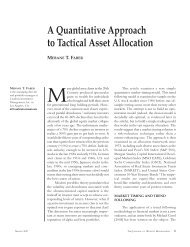
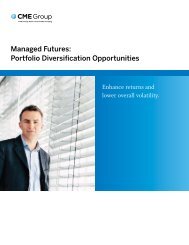
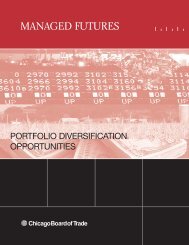
![Definitions & Concepts... [PDF] - Cycles Research Institute](https://img.yumpu.com/26387731/1/190x245/definitions-concepts-pdf-cycles-research-institute.jpg?quality=85)
